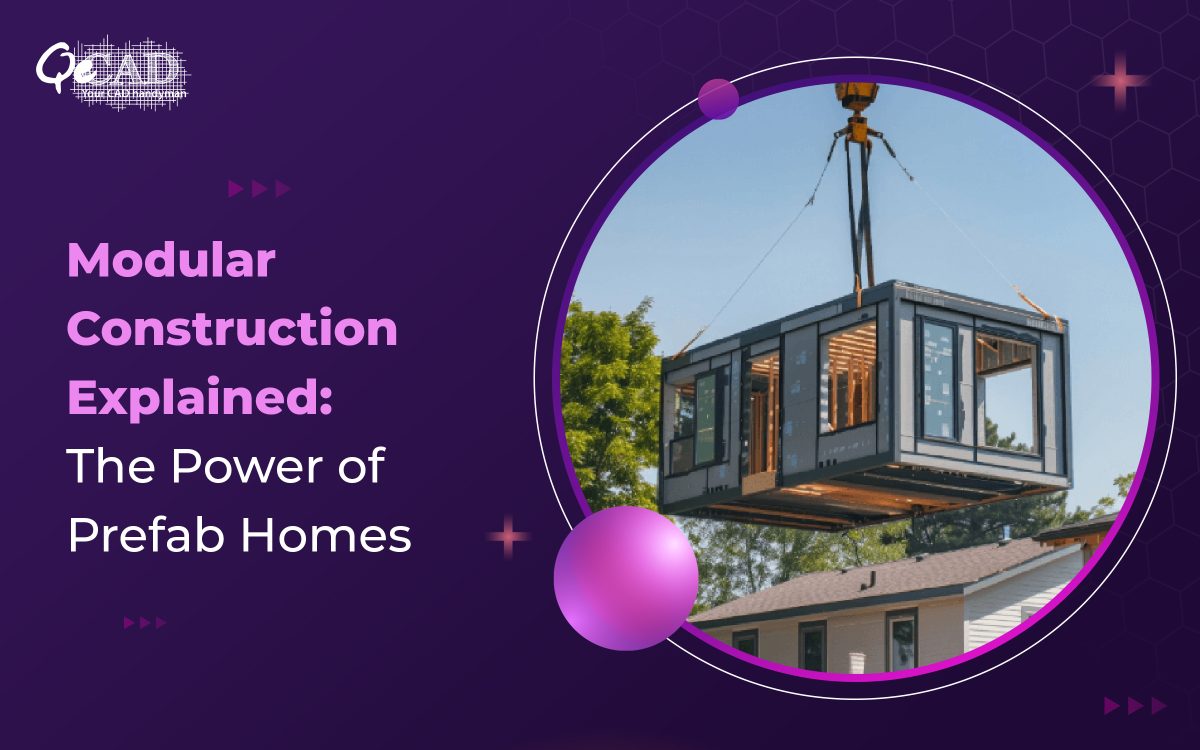
31 Jul 2025
By : dolly / Comments 0
Modular Construction Explained: The Power of Prefab Homes
The construction industry is entering a new era — one defined by speed, efficiency and innovation. At the heart of this evolution are prefabricated houses, also known as modular or off-site homes. From streamlined workflows to cost control and sustainability, prefab construction is changing how we build — and how fast we build.
What Are Prefab Houses?
Prefab houses are built in a factory-controlled environment where components (walls, floors, roofs, etc.) are manufactured and later assembled on-site. This off-site approach contrasts the traditional construction which relies heavily on the sequential, on-site processes that are often vulnerable to delays and weather disruptions.
Why Are Prefab Homes Gaining Momentum?
1. Faster Construction Timelines
One of the biggest benefits of prefab homes is their rapid construction timeline. Since site preparation and module manufacturing can happen simultaneously, project timelines are drastically reduced — a major benefit in time-sensitive projects.
2. Cost-Effective Building
Controlled factory conditions reduces the labor costs, minimizes the material wastes and improves the overall efficiency. Prefab construction also lessens the delays caused by the unpredictable site conditions or weather.
3. Superior Quality Control
Factory settings offers better supervision hence ensuring the consistent quality across every component. This results in better insulation, tighter joints and overall improved energy performance.
4. Sustainability and Waste Reduction
Prefabricated methods supports the sustainable construction by optimizing the material usage and minimizing the on-site wastes. Many prefab houses are designed with the energy efficiency in mind and supports the green building certifications.
How Prefab Houses Contributes to Quicker Construction?
Speed is perhaps the most compelling benefit of the prefab homes. Since the modules are manufactured in parallel with site development, project timelines are significantly compressed. Factory conditions also allows for the 24/7 operations, uninhibited by the weather or daylight which boosts the production efficiency.
Moreover, when combined with the BIM Coordination Services, prefab projects benefits from the highly detailed digital planning. BIM allows all the disciplines — architectural, structural and MEP — to coordinate in a single model thereby ensuring that all the prefabricated components aligns perfectly on-site. This drastically reduces the rework and also the installation delays.
The Profit Advantage of Prefab Homes
Prefab construction isn’t just faster — it’s smarter for your bottom line:
- Lower Labor Costs: Reduced need for the skilled on-site labor.
- Less Material Waste: Precision manufacturing cuts down on the scrap.
- Reduced Financing Timeframes: Shorter project cycles means quicker returns.
- Minimized On-Site Disruption: Especially advantageous in the urban or sensitive environments.
For developers, builders and investors, these benefits translates into the higher margins and a more predictable path towards the profitability.
The Role of Pre-Construction Services in Prefab Projects
Behind every successful prefab project is a solid plan. Pre-Construction Services ensures that everything right from the design validation to the cost estimation is aligned with the prefab methodologies. This phase is critical to:
- Evaluating site limitations and available utility connections
- Coordinating transportation and crane logistics
- Reviewing the material choices suitable for the modular builds
- Aligning the timelines for factory production and site readiness
By investing in the robust pre-construction planning, stakeholders reduces the risk and gains clarity across all the project phases.
Important Considerations for Prefab Houses
Despite their many advantages, it’s essential to keep the following factors in mind:
- Design Limitations: Modular units may have dimensional constraints based on the transportability.
- Upfront Coordination: It requires thorough planning and collaboration early in the project lifecycle.
- Permitting Challenges: Some jurisdictions may have outdated codes which are not aligned with the prefab methodologies.
- Transportation Logistics: Oversized modules needs clear delivery paths and crane setup zones.
When addressed properly — especially through the BIM Coordination Services and expert Pre-Construction Services — these challenges can be efficiently mitigated.
Real-World Applications
- Urban Infill Projects: Prefab units are ideal for fast-track housing developments in the dense cities.
- Remote and Disaster Relief Housing: Their portability and quick setup makes them perfect for the hard-to-reach or even for the emergency zones.
- Student and Senior Housing: Prefab provides scalable, repeatable models with the consistent quality for the institutions.
Conclusion
Prefab homes are not just a niche innovation — they are a mainstream solution to the modern construction crisis. As urban populations grows and timelines shrinks, the ability to deliver the high-quality structures quickly and affordably is a game-changer.
By integrating BIM and leveraging the strong Pre-Construction Services, stakeholders can unlock the full potential of the prefab housing. The outcome? Smarter, more sustainable buildings delivered in record time.

